Moss is one of the most common problems in UK lawns. While moss isn’t dangerous, it is ugly, and causes long-lasting damage to your lawn by suffocating grass plants and limiting their supply of nutrients and water.
Here, we’ve shared why moss grows in the UK, and – importantly – how you can remove moss and prevent moss regrowth on your lawn.
✅Key Takeaways:
Your lawn might have moss if you have soil drainage issues, your lawn is in shade, you have acid soil, or you don’t maintain your lawn to prevent moss.
The best way to get rid of moss is to kill the moss with a chemical moss killer, then wait 7-14 days before raking the dead moss off your soil surface.
You can prevent moss from growing by implementing suitable lawn treatment practices, such as reseeding bare patches of your lawn, mowing your grass frequently, reducing shade, and feeding your lawn with fertiliser.
Table of Contents
 Why Is Moss Taking Over Your Lawn?
Why Is Moss Taking Over Your Lawn?
So, why does moss end up on lawns?
Moss thrives in the environmental conditions that are found in the UK. Some of the reasons why moss may take over your lawn are:
Moisture – The UK is well known for its wet weather, and our damp climate creates conditions that favour moss growth. Excessive moisture can lead to waterlogged soil and poor drainage, which are ideal for moss to thrive.
Shade – Many lawns in the UK are relatively small and shaded by trees, buildings, or fences, limiting the amount of sunlight that the grass has access to. Moss grows best in shady conditions and can outcompete grass in areas where sunlight is limited. A lack of direct sunlight reduces the hardiness of the grass and allows moss to take hold.
Soil acidity – Moss prefers acidic soil conditions, and most parts of the UK have naturally acidic soils. Acidic soil can be caused by factors such as rainwater leaching through acidic materials, the presence of certain tree species, or the accumulation of organic matter (like leaves). If your soil is acidic, it provides an ideal environment for moss growth.
A lack of maintenance – Many homeowners in the UK are too busy to learn about the conditions that lead to moss in lawns and the best practices to prevent it. Usually, moss appears gradually over time, and most people either don’t notice it or don’t know what to do about it.
Why do some people have moss growing all over their lawns while others have little or no moss? The reason for this is that some lawn are more susceptible to moss than others.
For instance, if you have a shaded lawn that doesn’t have access to direct sunlight and has poor drainage, and you don’t follow any practices to maintain your lawn and prevent moss, you’re more likely to have a moss problem than somebody with a well-maintained lawn with good drainage that gets good sunlight.
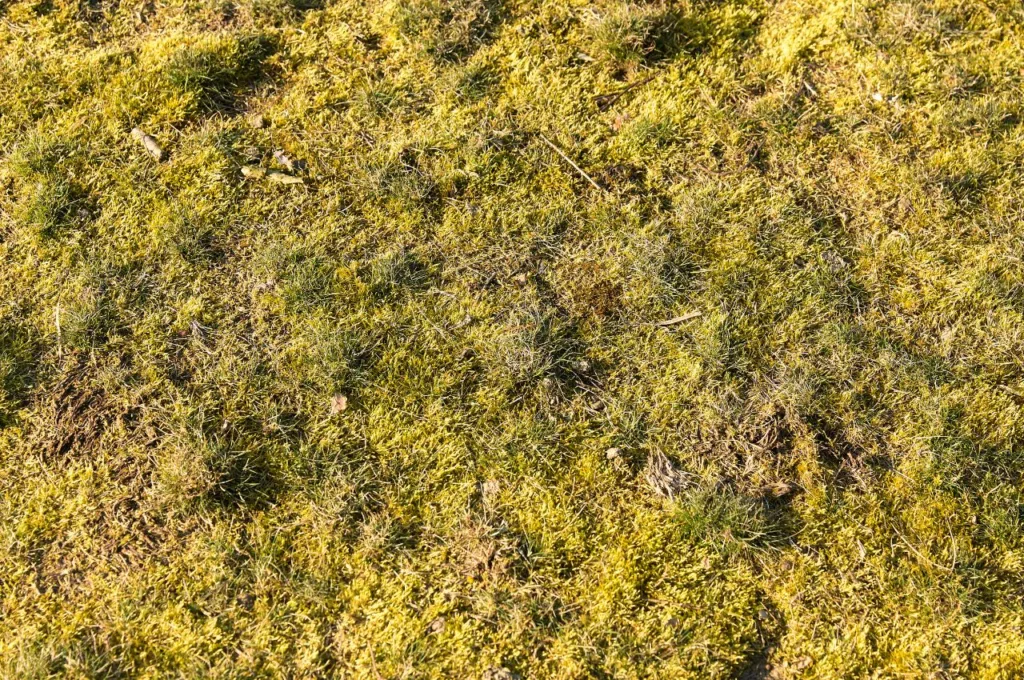
🤷♂️ Is Moss In A Lawn A Problem?
Lawn moss isn’t technically a problem because it’s not dangerous. However, if you care about lawn aesthetics or you just want to sustain a healthy lawn, excess moss will more than likely pose a problem for you.
Moss is considered a weed and a nuisance because it hinders grass growth, resulting in sparse, weak grass that may eventually die. It also gives lawns a patchy, discoloured appearance, and lacks the vibrant green colour of a healthy lawn. If you pride yourself on your well-maintained lawn, moss will soon become your arch nemesis.
If you allow moss to spread, it’ll quickly take over your lawn. Sometimes, moss becomes such a big problem that it’s easier to kill the existing lawn and establish a new lawn in its place.
🚜 How To Remove Or Kill Moss On Your Lawn
The best time to remove or get rid of moss in lawns is spring or autumn.
We recommend using a chemical moss killer to kill the moss and prevent it from spreading its spores while you remove it. Our top-recommended product is the Aftercut 20400459 All In One Lawn Feed because it’s one of the most popular grass treatments that kills moss and kills weeds and fertilises your lawn in one.
Here are the steps to follow when using a moss killer on your lawn:
Apply the formula to your lawn following the manufacturer’s instructions.
Wait for 7-14 days.
Rake your lawn to remove the dead moss.
It’s that simple! Using a moss killer on your lawn shouldn’t affect your grass health – in fact, some moss killer formulas boost grass health while killing off moss, so they’re the ideal lawn care solution.
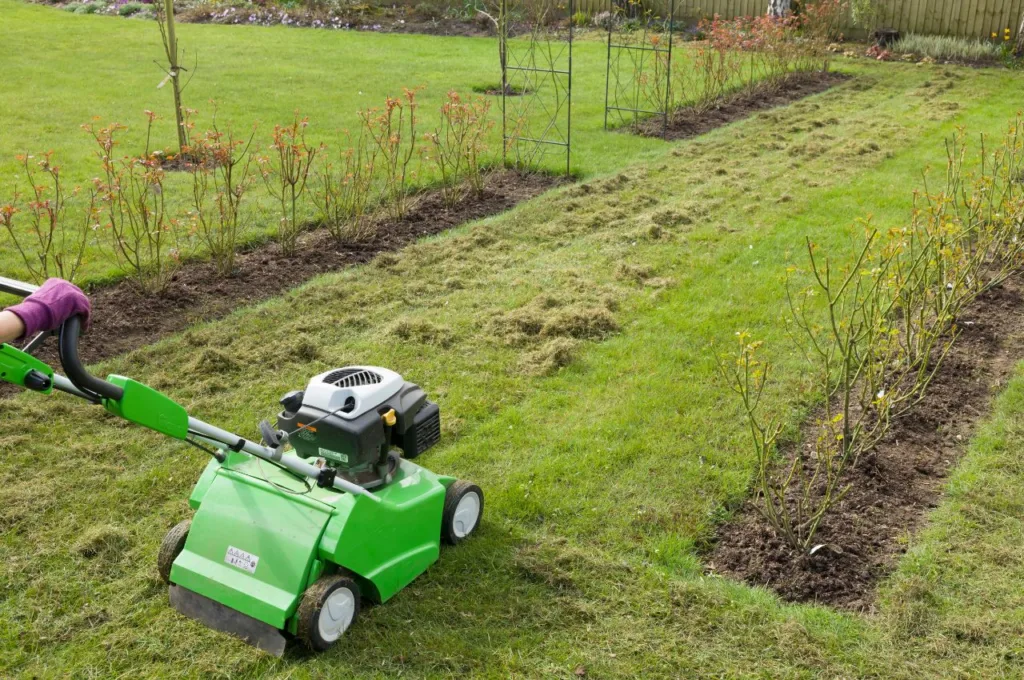
🧐 How To Prevent Moss Regrowth
Unfortunately, you can never fully prevent moss growth in the UK. Our damp, cool climate is ideal for moss growth, so you’ll probably always deal with moss issues on some level regardless of your actions.
However, there are a few methods of preventing moss growth that should help you to at least stop moss from taking over your lawn:
💦 Improve Drainage
Since excess water is the main cause of moss growth, it makes sense that improving your lawn drainage will reduce the likelihood of moss regrowth.
You can improve your lawn drainage by aerating the soil with an aeration tool. We recommend the Einhell GC-SA 1231/1 Electric Lawn Scarifier And Aerator because it’s the most popular and highly-rated aerator available on Amazon today. You could use a garden fork if you prefer not to spend money on anything fancy – it’ll just take you longer.
You should also remove any areas of compacted soil and fill out low spots, so water can flow freely without pooling on the surface of your soil.
🧪 Adjust Soil Acidity
Moss grows the fastest in acidic soil conditions. Test your soil’s pH, and if it’s around 6.0-5.5 or lower, look into raising the pH level to make the soil more alkaline.
The best way to increase the pH of your lawn is to apply a material containing some form of lime, like ground limestone. Make sure to follow the recommended application rates for your specific soil type.
Note: Moss prefers to grow in acidic soil, but it can still grow in soils with a neutral or even alkaline pH, so adjusting your soil acidity alone won’t prevent moss from growing.
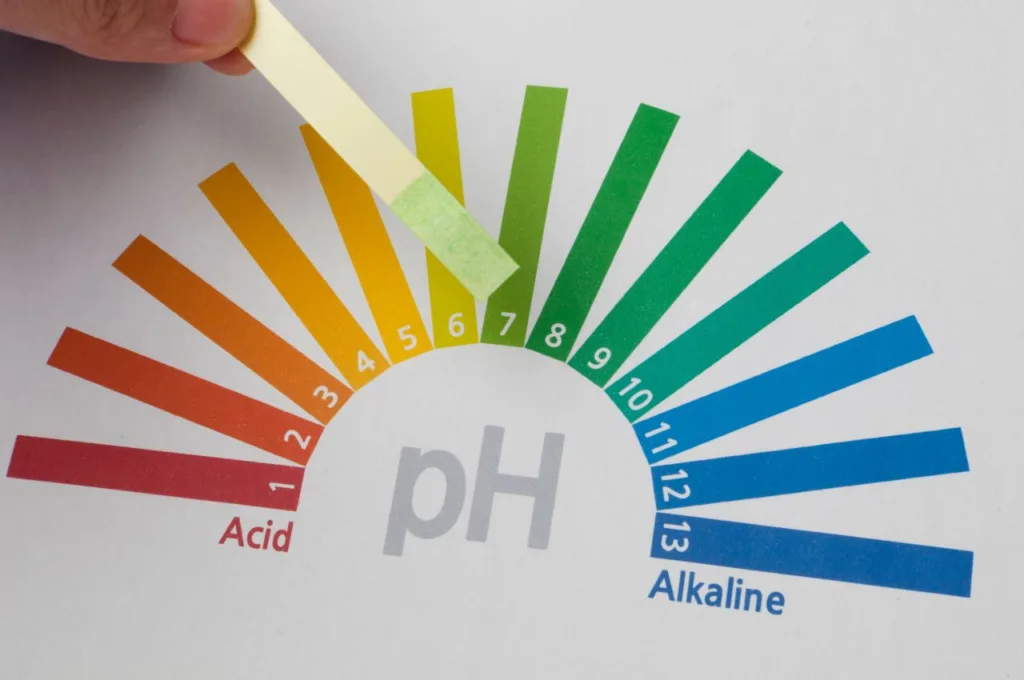
☀️ Increase Exposure To Sunlight
Moss thrives in shady areas where sunlight is limited. While there’s not a lot you can do about a garden that’s mostly in shade due to the position of your house, you can reduce shaded areas caused by trees, plants, and other large garden features.
Trim back overhanging tree branches and shrubs to allow more sunlight to reach the lawn.
If your lawn is naturally shaded, look at grass varieties that are more shade-tolerant, like bentgrass and fescue. These grass species will grow healthily even if they don’t have a lot of access to sunlight, and the more grass growth you can encourage, the more easily you should be able to tame the moss on your lawn.
🌱 Reseed Or Overseed The Lawn
Moss will take advantage of any available space to grow. So, if you have bare or thin areas in your lawn, reseed or overseed those areas with grass seed suitable for your climate and soil conditions.
A dense lawn will help prevent moss from taking hold because healthy lawn growth should prevent moss from taking over.
Want to know which grass seed we recommend for UK gardens? Check out our guide to the best grass seed available today.
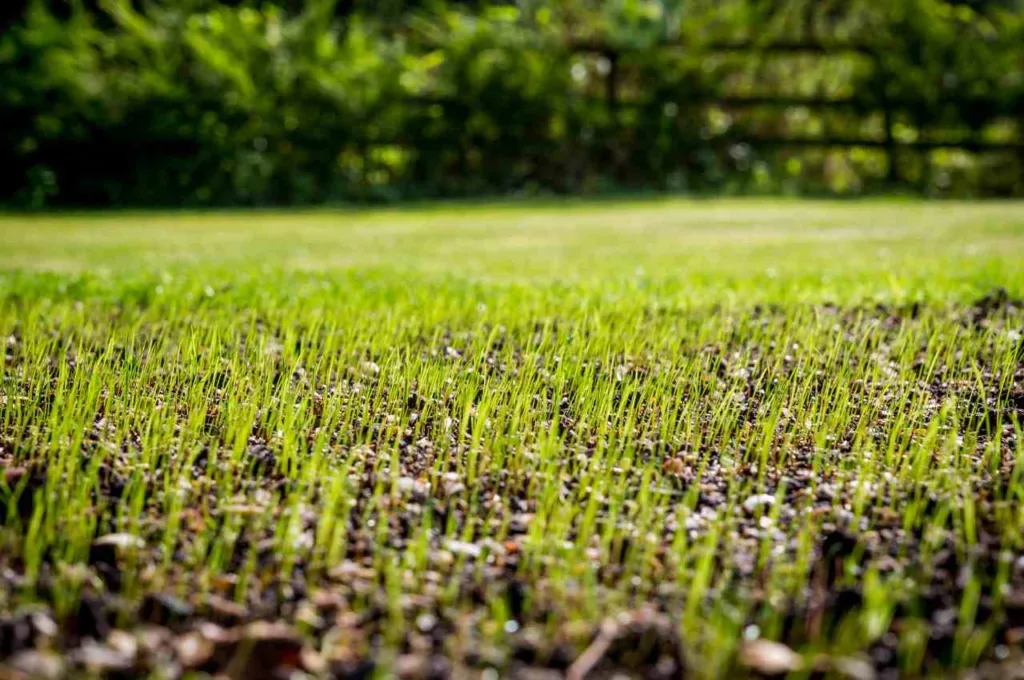
💎 Improve Your Lawn Care Practices
There are a few lawn care practices that you can implement or improve to reduce the likelihood of a mossy lawn.
Our top tip is to encourage vigorous grass growth by mowing regularly – at least once a week in the summer – and using lawn feed to encourage grass to spread sideways, creating a denser lawn with less room for moss to grow. Take a look at the best lawn feeds in this guide.
Also avoid overwatering your lawn, which will increase your lawn’s moisture content, leading to conditions that are optimal for moss growth.
🗓 Perform Regular Maintenance
Keep an eye on your lawn and make sure you’re providing the right environment for healthy grass growth.
If you notice any issues, address them promptly before the moss has a chance to take over your lawn. Regular maintenance tasks to ward off moss include:
Raking leaves
Removing debris
Addressing poor drainage/soil compaction
Reseeding bare patches
Print out our moss prevention infographic below to reference when you’re carrying out your weekly garden chores.
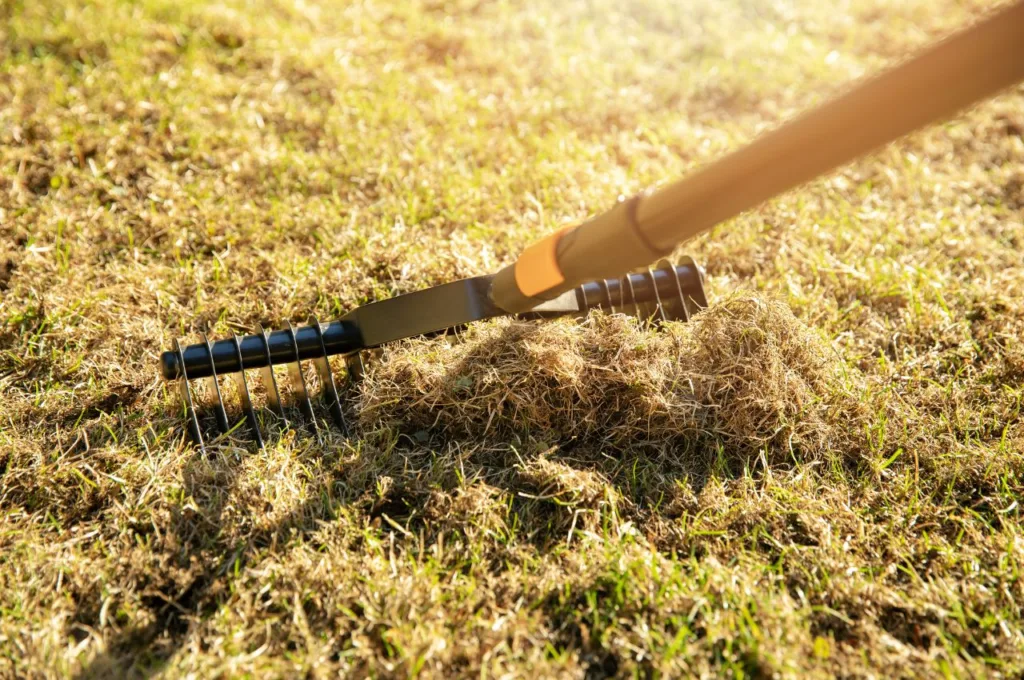
✅ Moss Prevention Checklist
Follow this checklist to prevent or reduce moss on your lawn:
✓ Mow your lawn regularly
✓ Manage your soil pH
✓ Fix drainage issues
✓ Reduce shade
✓ Rake leaves and remove debris
✓ Reseed or oversees bare areas
✓ Use a lawn feed/fertiliser regularly
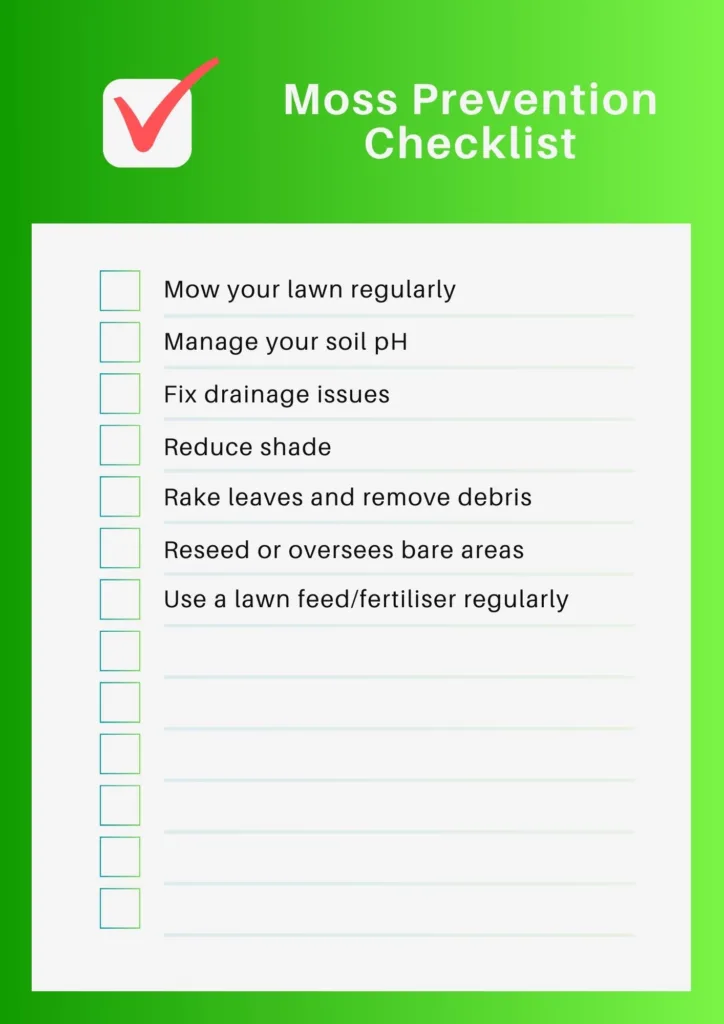
🏁 Final Word
Lawn moss is a bit of an eyesore, but luckily, it’s fairly easy to kill or remove. Once you know the best practices to prevent moss from growing in your garden, you’ll be able to keep your lawn healthy and moss-free with minimal effort on your part.
Our takeaway tip is this: don’t neglect lawn maintenance! Spending just a bit of money on lawn seed and fertiliser and taking just 30 minutes per week to rake, mow, and feed/seed your lawn when necessary is usually all it takes to keep a moss problem at bay. Respect your lawn and it’ll respect you right back with lush, healthy grass that chokes out moss and other lawn weeds.
